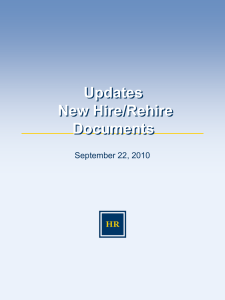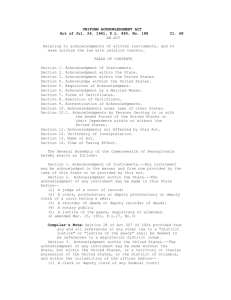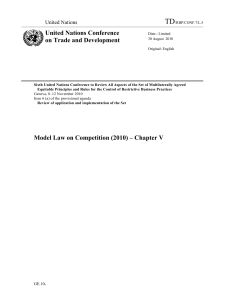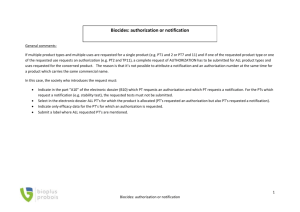Are your personnel files helping or hurting you
advertisement
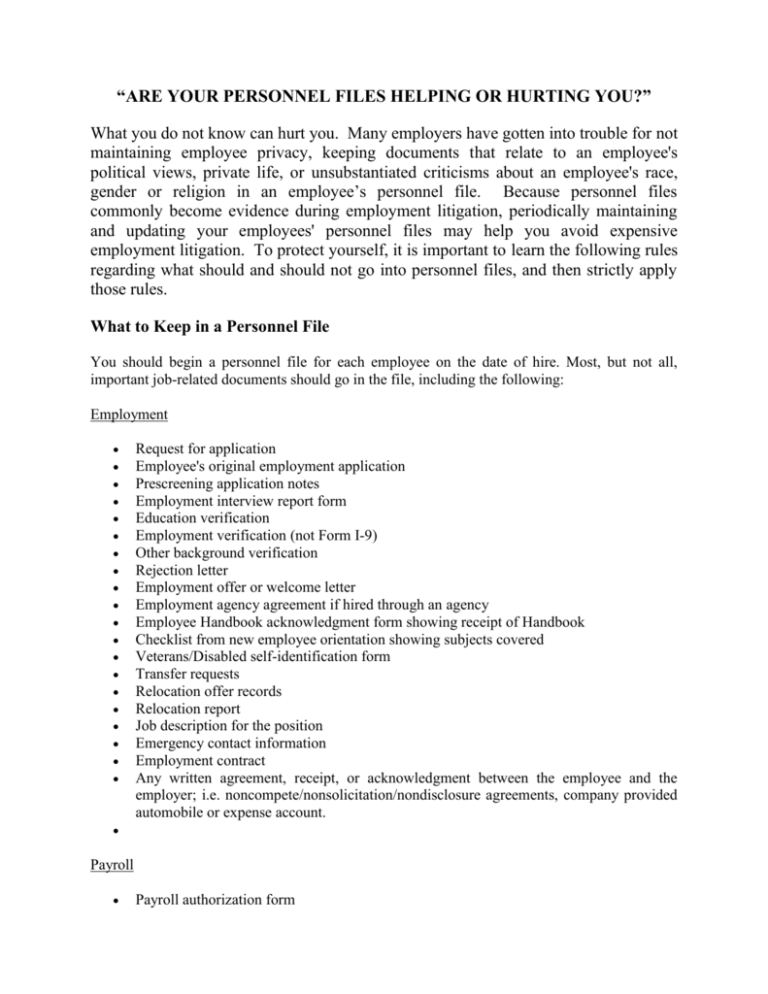
“ARE YOUR PERSONNEL FILES HELPING OR HURTING YOU?” What you do not know can hurt you. Many employers have gotten into trouble for not maintaining employee privacy, keeping documents that relate to an employee's political views, private life, or unsubstantiated criticisms about an employee's race, gender or religion in an employee’s personnel file. Because personnel files commonly become evidence during employment litigation, periodically maintaining and updating your employees' personnel files may help you avoid expensive employment litigation. To protect yourself, it is important to learn the following rules regarding what should and should not go into personnel files, and then strictly apply those rules. What to Keep in a Personnel File You should begin a personnel file for each employee on the date of hire. Most, but not all, important job-related documents should go in the file, including the following: Employment Request for application Employee's original employment application Prescreening application notes Employment interview report form Education verification Employment verification (not Form I-9) Other background verification Rejection letter Employment offer or welcome letter Employment agency agreement if hired through an agency Employee Handbook acknowledgment form showing receipt of Handbook Checklist from new employee orientation showing subjects covered Veterans/Disabled self-identification form Transfer requests Relocation offer records Relocation report Job description for the position Emergency contact information Employment contract Any written agreement, receipt, or acknowledgment between the employee and the employer; i.e. noncompete/nonsolicitation/nondisclosure agreements, company provided automobile or expense account. Payroll Payroll authorization form IRS Form W-4 (the Employee's Withholding Allowance Certificate) Weekly time sheets Individual attendance record Pay advance request record Garnishment orders and records Authorization for release of private information Authorization for all other payroll actions Notification of wage and or salary increase/decrease Performance Appraisals New employee progress reports Performance appraisal forms Performance improvement program records Employee written warning notice Training and Development Training history records Training program applications/requests Skills inventory questionnaire Training evaluation forms In-house training notification letters Training expense reimbursement records Employee Separations Exit interview form Final employee performance appraisal Exit interviewer's comment form Record of documents given with final paycheck Any documents relating to the worker's departure from the company (such as reasons why the worker left or was fired, unemployment documents, insurance continuation forms, and so on) Benefits Emergency Contact Form Medical/Dental/Vision coverage waiver/drop form Vacation accrual/taken form Request for non-medical leave of absence Retirement application Payroll deduction authorizations COBRA notification/election Hazardous substance notification and or reports Employer concession and or discount authorization Annual benefits statement acknowledgment Safety training/meeting attendance/summary forms Reviewing Personnel Files You should establish a time to periodically review each employee's personnel file, perhaps when you conduct the employee's annual evaluation. During this review, consider whether the documents in the file are accurate, up to date, and complete. Some questions to consider: Does the file contain every written evaluation of the employee? Does the file reflect all of the employee's raises, promotions, and commendations? Does the file show every warning or other disciplinary action taken against the employee? If your policies provide that written warnings or other records of discipline will be removed from an employee's file after a certain period, have they been removed? If the employee was on a performance improvement plan, a probationary or training period, or other temporary status, has it ended? Has the file been updated to reflect the employee's current status? If the employee handbook has been updated since the employee started working for you, does the file contain a receipt or acknowledgment for the most recent version? Does the file contain current versions of every contract or other agreement between you and the employee? What Not to Keep in a Personnel File Your personnel files should not be a receptacle for every document, note, or thought about the employee. Here are some areas about which to be careful: Medical records: Do not put medical records into a personnel file, e.g., physician records of examination, diagnostic records, laboratory test records, drug screening records, any of the records protected by HIPAA -- health insurance application form, life insurance application form, request for medical leave of absence regardless of reason, personal accident reports, workers' compensation report of injury or illness, OSHA injury and illness reports, any other form or document which contains private medical information for a specific employee. If your worker has a disability, you are legally required to keep all of the worker's medical records in a separate file -- and limit access to only a few people. Form I-9s: Do not put Form I-9s into your employees' personnel files. (Form I-9 is a form from U.S. Citizenship and Immigration Services (USCIS), formerly the INS. You must complete an I9 for all employees, verifying that you have checked to be sure that the employees are legally authorized to work in the United States.) You should put all Form I-9s into one folder for USCIS. The government is entitled to inspect these forms, and if it does, you don't want the agents viewing the rest of the employee's personnel -- and personal -- information at the same time. Not only would this compromise your workers' privacy, but it might also open your business up to additional questions and investigation. Insupportable Opinions: Do not write marginal notes on any document indicating management bias or discrimination (e.g.: "This guy's too fat. He'd never make it," or "She's too old for this job."). Indiscreet entries that do not directly relate to an employee’s job performance and qualifications -- like references to an employee’s private life or political beliefs, unsubstantiated criticisms or comments about an employee’s race, sex or religion will come back to haunt you. Unnecessary material: Although an employee's personnel file may contain any other jobrelated documents, don't go overboard. A good rule of thumb: Don’t put anything in a personnel file that you would not want a jury to see. The attorneys in Wells Marble’s Employment & Labor Law Group offer various types of audits from the most basic, high-level review (which may take only a few hours) to an in-depth analysis of practices, documents, and compliance mechanisms. If you would like more information regarding our audit services, or assistance creating sound and effective personnel policies, please contact: CRISTINA GUERRERO Wells Marble & Hurst, PLLC cguerrero@wellsmar.com 601-605-6900
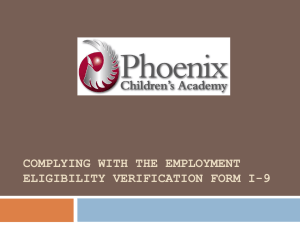

![[Product Name]](http://s2.studylib.net/store/data/005238235_1-ad193c18a3c3c1520cb3a408c054adb7-300x300.png)



